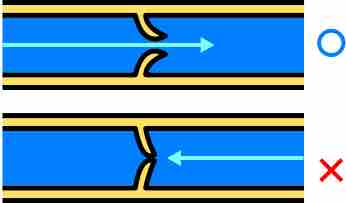Veins are blood vessels that carry blood towards the heart. Most carry deoxygenated blood from the tissues back to the heart, but the pulmonary and umbilical veins both carry oxygenated blood to the heart. The difference between veins and arteries is the direction of blood flow (out of the heart through arteries, back to the heart through veins), not their oxygen content. Veins differ from arteries in structure and function. For example, arteries are more muscular than veins, veins are often closer to the skin, and veins contain valves to help keep blood flowing toward the heart, while arteries do not have valves and carry blood away from the heart. The precise location of veins is much more variable than that of arteries, since veins often display anatomical variation from person to person.
Veins are also called capacitance vessels because they contain 60% of the body's blood volume. In systemic circulation, oxygenated blood is pumped by the left ventricle through the arteries to the muscles and organs of the body, where its nutrients and gases are exchanged at capillaries. The blood then enters venules, then veins filled with cellular waste and carbon dioxide. The deoxygenated blood is taken by veins to the right atrium of the heart, which transfers the blood to the right ventricle, where it is then pumped through the pulmonary arteries to the lungs. In pulmonary circulation the veins return oxygenated blood from the lungs to the left atrium, which empties into the left ventricle, completing the cycle of blood circulation.
Mechanisms to Return Blood
The return of blood to the heart is assisted by the action of the skeletal-muscle pump and by the thoracic pump action of breathing during respiration. As muscles move, they squeeze the veins that run through them. Veins contain a series of one-way valves. As the vein is squeezed, it pushes blood through the valves, which then close to prevent backflow. Standing or sitting for prolonged periods can cause low venous return from venous pooling. In venous pooling, the smooth muscles surrounding the veins become slack and the veins fill with the majority of the blood in the body, keeping blood away from the brain, which can cause unconsciousness.

Venous valve
Venous valves prevent back flow and ensure that blood flows in one direction.
Although most veins take blood back to the heart, portal veins carry blood between capillary beds. For example, the hepatic portal vein takes blood from the capillary beds in the digestive tract and transports it to the capillary beds in the liver. The blood is then drained in the gastrointestinal tract and spleen, where it is taken up by the hepatic veins and blood is taken back into the heart. Since this is an important function in mammals, damage to the hepatic portal vein can be dangerous. Blood clotting in the hepatic portal vein can cause portal hypertension, which results in a decrease of blood fluid to the liver.
Vein Classification
Veins are classified in a number of ways, including superficial vs. deep, pulmonary vs. systemic, and large vs. small:
- Superficial veins - Superficial veins are close to the surface of the body and have no corresponding arteries.
- Deep veins - Deep veins are deeper in the body and have corresponding arteries.
- Communicating veins - Communicating veins (or perforator veins) directly connect superficial veins to deep veins.
- Pulmonary veins - The pulmonary veins deliver oxygenated blood from the lungs to the heart.
- Systemic veins - Systemic veins drain the tissues of the body and deliver deoxygenated blood to the heart.